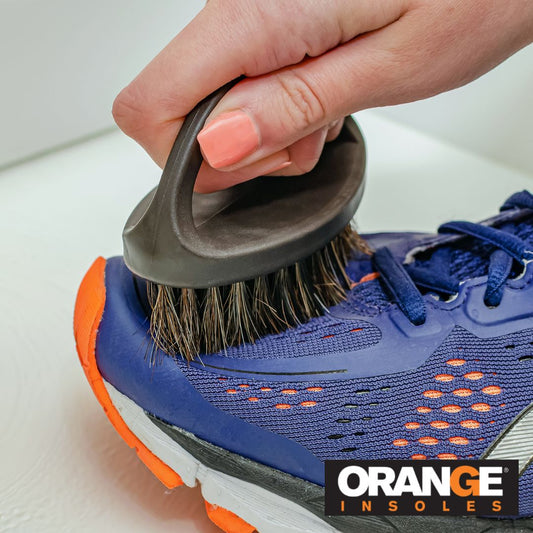Participating in a fun run is an exciting and rewarding experience. Whether you’re a seasoned runner or a beginner, proper preparation is essential to ensure you enjoy the event and perform at your best. The key to having a fun run is that the fun is maintained by making sure you prevent things that hold you back from the experience. Here’s our preparation list to make the most out of the race!
1. Set Clear Goals
Before you begin training, it’s important to set clear and achievable goals. Ask yourself what you want to accomplish. Is it to complete the run without stopping, improve your personal best time, or simply have fun and enjoy the experience? Setting specific goals will help you stay motivated and focused throughout your training.
2. Choose the Right Gear
Having the right gear is crucial for a comfortable and successful run. Invest in a good pair of running shoes that provide adequate support and cushioning. Wear moisture-wicking clothing to keep you dry and comfortable, and consider using accessories like a running belt for your essentials and a hat or sunglasses to protect yourself from the sun.
Insoles: The Added Advantage
One often overlooked piece of gear that can make a significant difference in your running experience is the use of insoles. Here’s why adding insoles to your running shoes can be an added advantage:
- Improved Comfort: Insoles provide additional cushioning and support, reducing the impact on your feet and joints. This can help prevent discomfort and pain, especially during longer runs.
- Enhanced Support: Proper arch support is crucial for maintaining foot alignment and preventing overpronation (excessive inward rolling of the foot) or supination (excessive outward rolling). Insoles can help correct these issues, reducing the risk of injuries.
- Reduced Fatigue: By improving alignment and providing better support, insoles can reduce muscle fatigue. This means you can run longer and recover faster.
- Injury Prevention: Insoles can help prevent common running injuries such as plantar fasciitis, shin splints, and Achilles tendonitis by providing the necessary support and reducing strain on vulnerable areas.
Adding insoles to your running shoes is a simple yet effective way to enhance your running experience and performance. Make sure to choose insoles that are designed for running and match your foot type and running style.
3. Follow a Training Plan
Having a structured training plan is essential to build your endurance and prepare your body for the fun run. Here’s a basic outline of a training plan:
- Week 1-2: Start with a combination of walking and running. Aim for 20-30 minutes of activity, three times a week.
- Week 3-4: Increase the running intervals and decrease the walking intervals. Aim for 30-40 minutes of activity, three to four times a week.
- Week 5-6: Focus on continuous running for 30-45 minutes. Include one longer run per week to build endurance.
- Week 7-8: Increase the duration of your long runs and continue with regular shorter runs. Aim for 40-50 minutes of activity, four times a week.
Make sure to include rest days in your training plan to allow your body to recover and prevent overtraining.
4. Stay Hydrated and Eat Well
Proper nutrition and hydration are key to your performance and recovery. Drink plenty of water throughout the day and especially before, during, and after your runs. Avoid sugary and caffeinated drinks, which can lead to dehydration.
Focus on a balanced diet rich in carbohydrates, proteins, and healthy fats. Carbohydrates provide the necessary energy for your runs, while proteins aid in muscle recovery. Include plenty of fruits, vegetables, whole grains, and lean proteins in your diet.
5. Warm Up and Cool Down
Warming up before your runs and cooling down afterward is essential to prevent injuries and improve flexibility. Start with a few minutes of walking or light jogging, followed by dynamic stretches such as leg swings, high knees, and butt kicks.
After your run, cool down with a few minutes of walking or slow jogging, followed by static stretches. Focus on stretching your calves, hamstrings, quadriceps, and hip flexors to improve flexibility and reduce muscle soreness.
6. Listen to Your Body
Pay attention to your body’s signals and adjust your training accordingly. If you experience pain or discomfort, take a break and allow your body to recover. Pushing through pain can lead to injuries and setbacks in your training.
Consider cross-training activities such as swimming, cycling, or yoga to improve overall fitness and reduce the risk of overuse injuries.
7. Get Enough Sleep
Adequate sleep is crucial for your body’s recovery and performance. Aim for 7-9 hours of sleep per night to ensure you’re well-rested and ready for your training sessions. Lack of sleep can affect your energy levels, mood, and ability to perform at your best.
Read more: The Importance of Sleep
8. Prepare Mentally
Mental preparation is just as important as physical training. Visualize yourself successfully completing the fun run and focus on positive thoughts. Develop a pre-race routine to help calm your nerves and get into the right mindset.
On the day of the run, arrive early to familiarize yourself with the course and do a light warm-up. Stay positive, trust your training, and most importantly, have fun!
Enjoy The Run
Preparing for a fun run involves setting goals, choosing the right gear, following a training plan, staying hydrated, eating well, warming up and cooling down, listening to your body, getting enough sleep, and preparing mentally. By taking these steps, you’ll be well-prepared to enjoy the experience and achieve your personal best.
Remember, adding insoles to your running shoes can provide an added advantage by improving comfort, support, and overall performance. So, lace up your shoes, get out there, and have a fantastic fun run!

























































